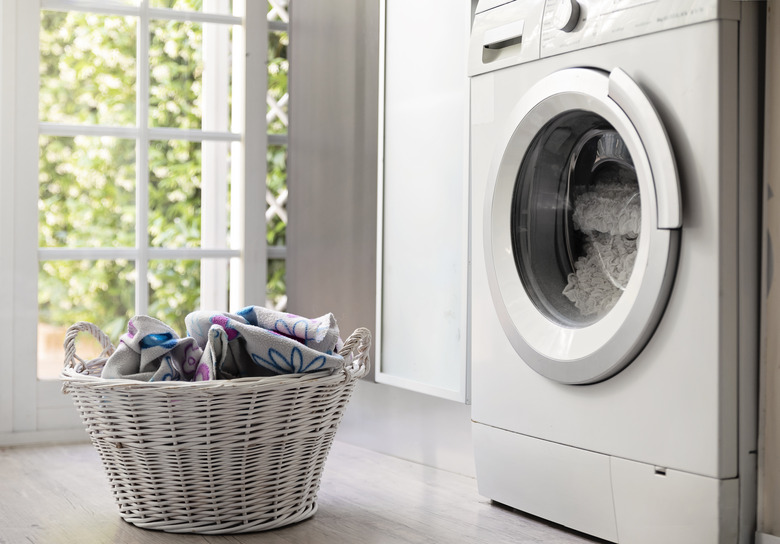How To Turn Off The Water On A Washing Machine
We may receive a commission on purchases made from links.
If you've never dealt with water damage in your home, consider yourself lucky. Even something as minor as a tiny leak in your washing machine water supply lines can cause thousands of dollars in damage and create structural and mold problems in your home. Turning off the water supply to your washer can help prevent those leaks when the machine is not in use. It's one of a handful of reasons you might need to turn your washing machine water valve on or off, which is usually a 10-second task.
Why Turn Off Water to the Washing Machine?
Why Turn Off Water to the Washing Machine?
The hoses that move water between your washing machine and your home's plumbing system become brittle and break down over time. Small leaks that spring up behind a washer might go undetected for weeks, especially if you're not home. So, it's a good idea to close the water valves before leaving home for vacation. You might even get in the habit of turning the water off every time you're finished using the washer.
Turning off the water may also be part of winterizing your washing machine if it's located on an uninsulated porch, in a basement, or in another cold part of your home. Water left in the washing machine water supply lines could freeze and cause pipes to burst.
If it's time to replace your washer, the water supply will need to be cut off before the old washer is removed and then restored when the new machine is in place.
Turning Washing Machine Water Valves On or Off
Turning Washing Machine Water Valves On or Off
Most of the time, turning a washing machine water valve on or off is quick and easy. Looking behind the washer where the machine's hoses meet the wall, you should see a red handle (hot water) and blue handle (cold water). The valves are open, and water is flowing when the handles are parallel to the pipe. Turn the handles 90 degrees so they're perpendicular to the pipe to shut the valve.
Older homes may have knob-style shutoff valves instead of red and blue levers. In this case, think "righty tighty, lefty loosey." Turn the knobs clockwise to shut off the water supply and counterclockwise to restore it.
Turning Stuck Water Valves
Turning Stuck Water Valves
Sometimes, water shutoff valves seize up and get stuck. Don't force a washing machine water valve on or off if it doesn't turn easily. If you break the valve, you may need to call in a plumber for an expensive repair.
Instead, spray the stuck valve with penetrating oil and let the oil work its magic for a few minutes. Clamp a plumbing wrench around the stuck valve and tap the handle of the wrench with a hammer to see if you can get the valve to budge. If not, apply more oil and warm the valve with a hair dryer on low heat before using the wrench again.
If your washing machine is currently leaking and you don't have time to ease the valves shut, find your home's main water shutoff valve and shut off the water to the entire house.
Upgrading Washing Machine Water Valves
Upgrading Washing Machine Water Valves
One way to minimize your risk of water damage from a leaking washing machine hose is to install a washing machine leak sensor on your valves. These sensors generally use two components. Valve adapters are screwed onto your existing valves and connected to your washing machine water supply lines. A unit that's connected to the valves sits on the floor behind the washing machine. If the floor unit detects water, it sounds an alarm and triggers the valve adapters to cut off the water supply, preventing further damage.
